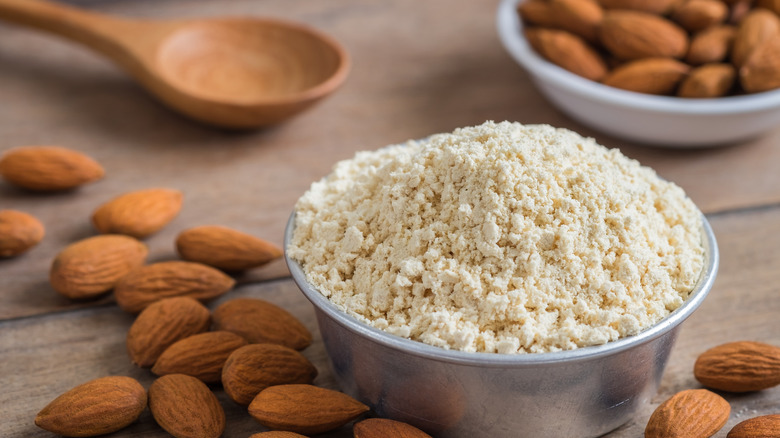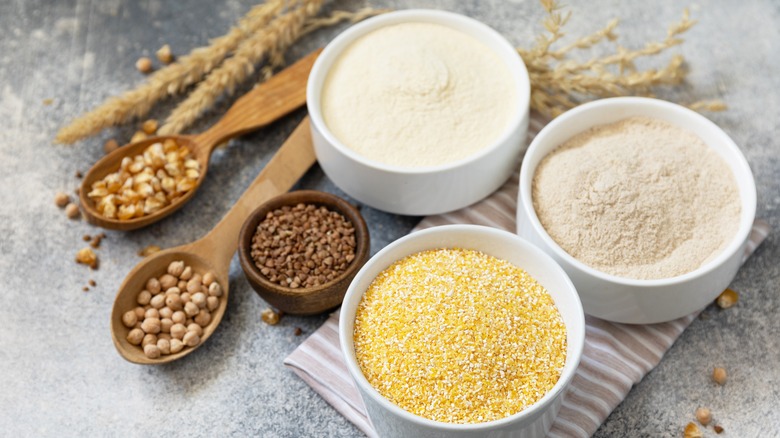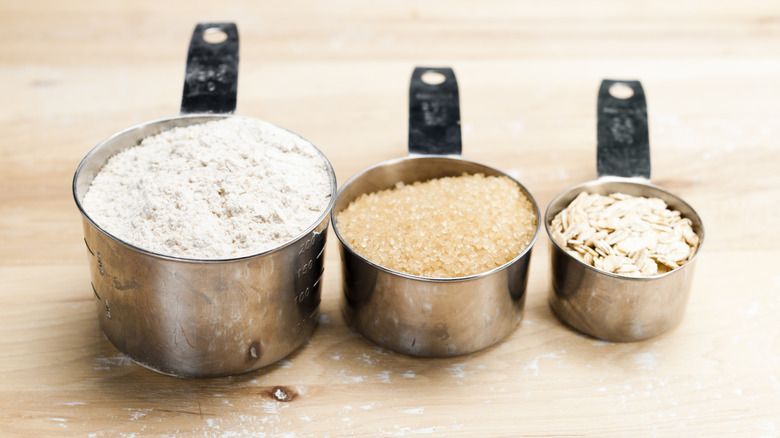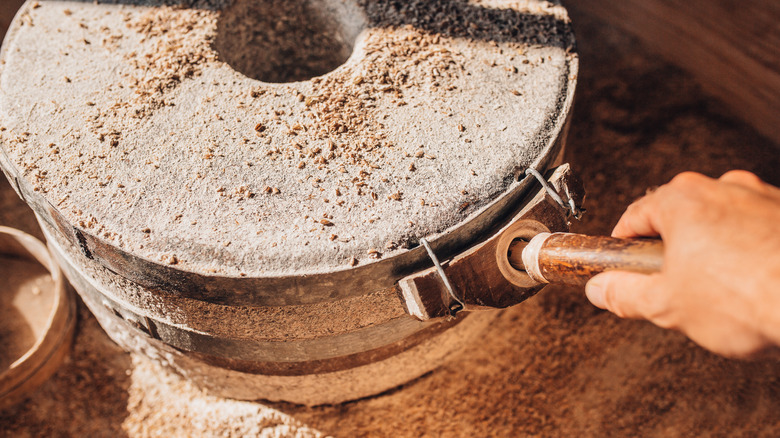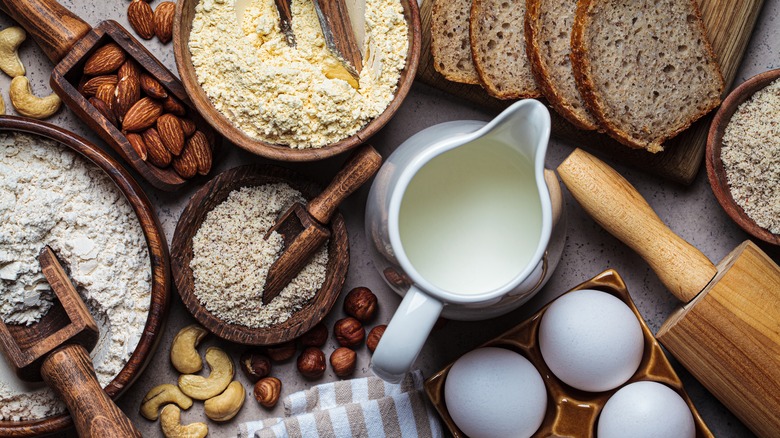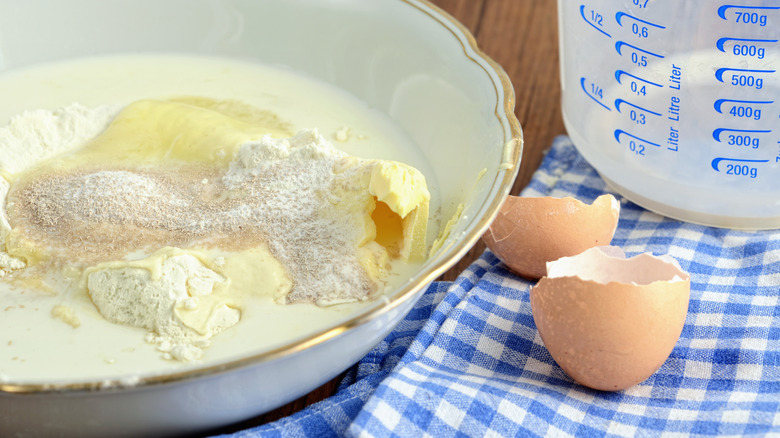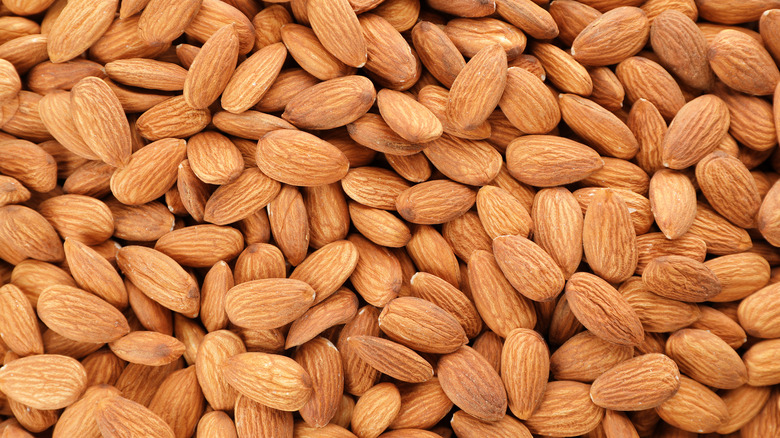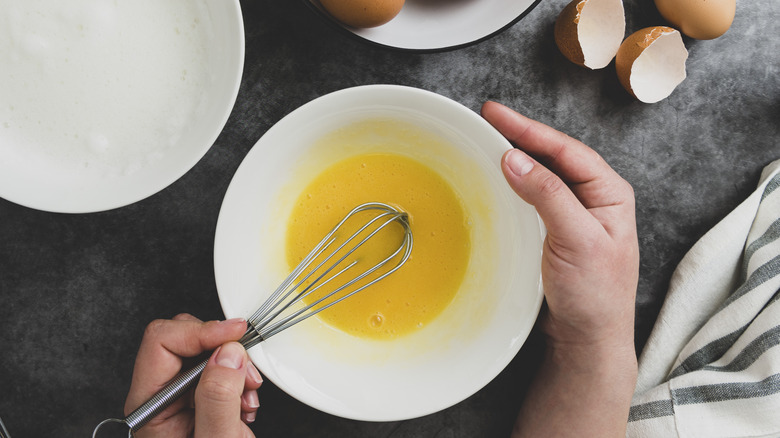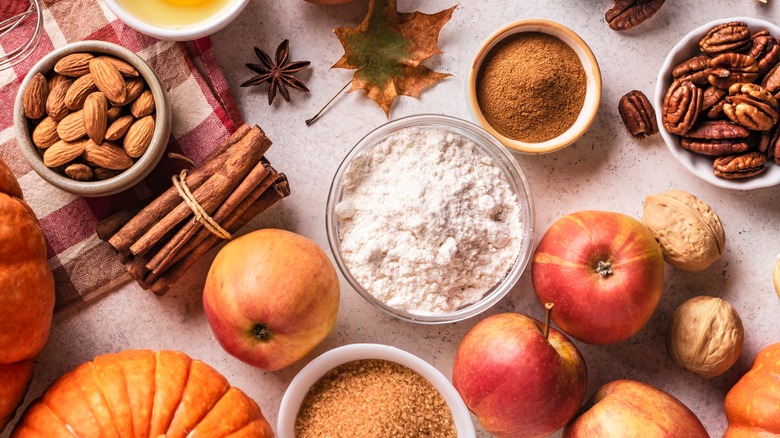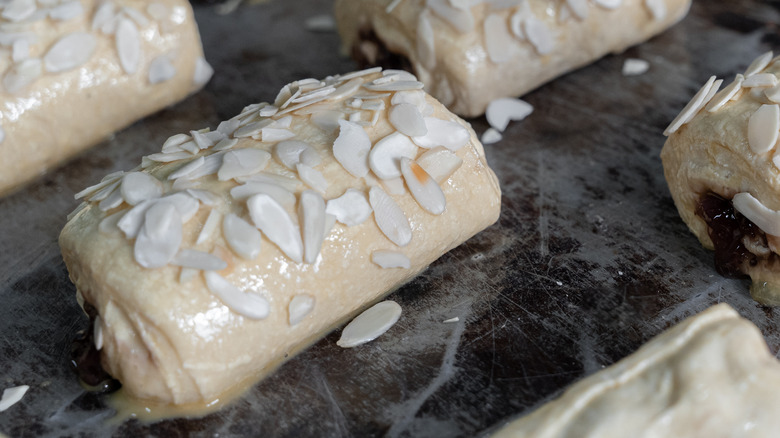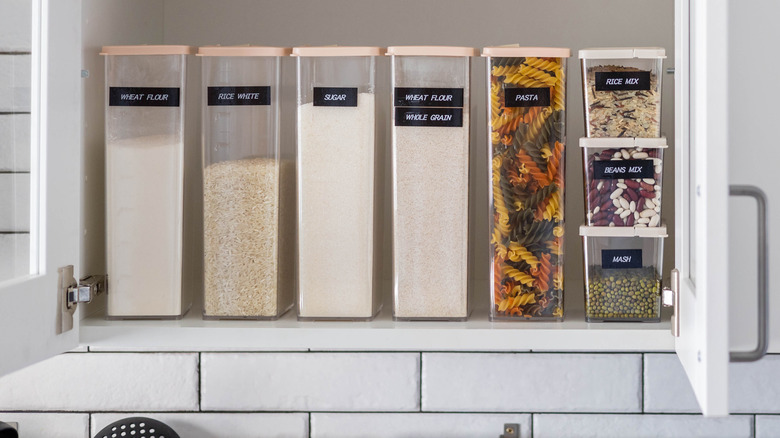11 Tips To Follow When Baking With Almond Flour
Welcome to the era of almond flour, a time when my own kitchen became a gluten-free laboratory of sorts. I recall the first time I brought home a bag of almond flour, its weight promising a new adventure. It was a necessity, born from my daughter's newly discovered gluten intolerance, but it became a passion. The first cake I baked was a revelation – rich with flavor and heartily approved by my toughest critic, my daughter, who exclaimed, "It tastes like cake!"
From that moment, almond flour earned its permanent spot in my pantry. Its rich, nutty taste and gluten-free properties have not only transformed our diet but also broadened my baking horizons.
Baking with almond flour is like discovering a new language in the world of culinary arts – it opens up a lexicon of textures and tastes that traditional wheat flour could never utter. It's true that almond flour requires a dancer's grace — a feel for when to lead with boldness and when to step back with subtlety. Yet, with each moist cake and each crisp cookie that emerges triumphantly from the oven, the dance becomes more intuitive. With these expert tips in hand, you, too, will be crafting almond flour masterpieces, ready to surprise and delight with each bite.
The initial trials taught me how almond flour's moisture-absorbing properties could change the texture of familiar treats. With each test batch, I gleaned more about its behavior.
Understanding almond flour
Almond flour isn't just a substitute for wheat flour; it's a transformative ingredient that redefines the baking landscape. With its inherently gluten-free composition, it offers a high-protein, low-carb, and fiber-rich alternative that can infuse your baked goods with a subtle, nutty flavor and a moist texture. But there's more to almond flour than just health benefits. Its lack of gluten — a protein that gives dough its elasticity and cakes its structure — means that almond flour behaves differently under the heat of the oven.
The challenge is to coax almond flour into yielding baked goods that rise beautifully and maintain their shape without the gluten framework. It's about understanding this flour's unique personality: How it absorbs moisture, binds with other ingredients, and reacts to heat. By acknowledging these characteristics, you can start to unlock the potential of almond flour, crafting baked goods that are not only delicious and nutritious but also visually stunning.
Ratio rationale
When replacing wheat flour with almond flour, the ratio is not a direct one-to-one exchange. Almond flour is denser and does not have the same binding properties as wheat flour due to its lack of gluten. Some experts suggest using a ratio of 1:1.5, meaning for every cup of wheat flour, you should substitute 1 cup of almond flour and an additional half cup. However, this can vary depending on the recipe. Blue Almond suggests a 1:1 ratio. Either way, starting with less almond flour and adjusting as needed, paying attention to the dough or batter consistency, is a good rule to start. This careful calibration ensures your baked goods retain their intended texture and structure.
In my own kitchen, this meant starting on the conservative side, using less almond flour initially and observing the changes in batter behavior. For instance, when attempting my family's heirloom pancake recipe, I found that a straight swap made the batter too heavy. Reducing the almond flour slightly while keeping an eye on the batter's thickness helped me preserve the cherished fluffiness we loved. This approach of gradual incorporation and attentive adjustment is the key to maintaining the beloved texture and structure we aim for in our baked treats. The right ratio of almond flour can lead to delightfully tender cakes and cookies that might just surpass their wheat-based predecessors in taste and texture.
Embrace the skin factor
Choosing the right type of almond flour is essential, as it impacts more than just the visual appeal of your baked goods—it can fundamentally change their taste and texture. Blanched almond flour, with its smooth consistency and pale color, is perfect for when you want your cakes to have a fine crumb or when you're aiming for the glossy peaks of a perfectly piped macaron. Its ability to blend seamlessly into batters makes it a go-to for those exquisite, refined treats where a uniform appearance is key.
On the other hand, unblanched almond flour brings its own set of characteristics to the table. When you're looking for something with a bit more texture and a bit more rustic charm, the speckled appearance of unblanched flour is ideal. It's not just about looks; the skins of the almonds enrich the flavor profile, giving a wholesome taste that complements ingredients like honey or maple syrup beautifully.
In my kitchen, I've learned to choose my flour based on the day's baking goal. For a tender, sophisticated sponge cake, blanched almond flour is my ally. But when I'm in the mood for a hearty, nutty-flavored banana bread, I reach for unblanched. This choice, this subtle consideration, makes all the difference, turning a simple baking project into a personalized creation that's a joy to share with family and friends.
Choose your grind
The granularity of almond flour can greatly influence your baking results. Finely ground almond flour, sometimes labeled as almond meal, creates a smoother texture in your final product and ensures a more uniform distribution of ingredients. This fine grind is particularly important for delicate baked goods like macarons or fine-textured cakes. It also helps with the absorption of moisture and fats, which is crucial given the different properties of almond flour. When selecting almond flour, opt for the finest grind to ensure your baked goods are as refined and palatable as possible.
For those endeavors where precision is paramount, such as the crafting of French macarons, which demand a certain finesse, finely ground almond flour is non-negotiable. It's the difference between a good bake and a great one. Moreover, a fine grind can mitigate the risk of a gritty texture, which can be the downfall of any well-intentioned almond flour dessert. It's about texture, taste, and the satisfaction of slicing into a smooth and tender cake to the palate. As you sift through your flour, you're not just preparing for another bake; you're setting the stage for something special.
Understanding binding agents
In the absence of gluten, almond flour needs a little help to bind ingredients together. Eggs are a traditional and effective binding agent, providing structure and elasticity. However, for those seeking a vegan option or for recipes that don't require eggs, xanthan gum is a popular alternative. It mimics gluten's properties by giving doughs and batters a sticky consistency that holds well during baking. The amount of binding agent required can vary, so it's best to refer to specific almond flour recipes or start with small amounts of xanthan gum — usually about 1/4 teaspoon per cup of almond flour — and adjust as needed. Experimentation is key to finding the perfect binder for your specific baking endeavor.
In recipes where eggs are not suitable, alternatives like chia or flax seeds soaked in water can create a gel-like mixture that lends a similar binding quality. These options not only hold your creation together but also add nutritional value.
It's important to recognize the role of moisture in binding as well. Almond flour's thirst for liquids can sometimes lead to an overly dry mix, so balancing your wet and dry ingredients is essential. This might mean adding an extra splash of almond milk or another favorite liquid to achieve the right dough consistency.
Measuring matters
Precision is crucial in baking, and this is especially true when it comes to almond flour. Its fine texture and higher fat content can lead to significant discrepancies when measured by volume. This is why weighing almond flour is the key to consistency. A digital kitchen scale can be your greatest ally, ensuring that you use the exact amount needed for your recipe.
Weighing your almond flour can prevent the common pitfalls of dense or dry results often associated with volume measurements. It guarantees that each batch of your almond flour baked goods maintains the same quality and texture, batch after batch. A digital kitchen scale does more than ensure precision — it instills confidence. By weighing out each gram, you're not just following a recipe; you're honoring the science of baking, where each ingredient must be in harmony with the others. This approach is particularly critical with almond flour, where even a slight deviation can alter the structure and mouthfeel of your baked goods.
The consistency you achieve through weighing your ingredients translates directly to the confidence you feel when you pull a perfectly textured, golden-brown treat from the oven. It's not merely about the measurements; it's about the satisfaction of knowing your creation will be just as you intended, every time. So, embrace the scale, and you'll find that your baked creations with almond flour reach new heights of perfection.
Moisture control
Almond flour can be quite the thirsty ingredient, absorbing more liquid than traditional flours. This means that recipes often need less liquid to achieve the desired consistency. However, it's not just about reducing liquids; it's about balance. Sometimes, you may find the need to add a bit more liquid to compensate for the dryness of other ingredients. This is where the art of baking with almond flour becomes evident. Each addition of liquid is a step towards achieving the perfect texture — too little, and the bake is dry and crumbly; too much, and it may not set properly.
The key is to observe the batter or dough as you mix. It should appear moist but not wet and cohesive but not sticky. Monitoring the consistency as you go allows for real-time adjustments, which is essential when working with such absorbent flour. It may take a few tries to get it just right, but once you do, you'll have unlocked the secret to perfectly moist and tender cakes, cookies, and other treats that are characteristic of almond flour's potential.
Fat content and freshness
Almond flour's rich fat content lends a luxurious mouthfeel to baked goods, but it also makes it prone to spoiling. To keep your almond flour fresh and flavorful, storage is critical. A cool, dark place is good, but the refrigerator or freezer is better, especially if you're not using it daily. This helps to maintain the flour's freshness and prevents the oils from turning rancid. Just be sure to bring the flour back to room temperature before you use it; cold flour can affect the outcome of your baked goods.
When incorporating almond flour into your recipes, consider the fat content adjustment a key step in the process. You may find that reducing butter or oil in your original recipe helps to offset the higher fat percentage found in almond flour. This adjustment helps to avoid an excessively oily texture, which can weigh down cakes and muffins, making them less appetizing.
When baking, the additional fat from almond flour means you might need to reduce other fats in the recipe. This will ensure your finished product has the perfect balance of moisture without being overly greasy. It's a delicate dance between the natural oils in the flour and the added fats, one that, when mastered, results in baked goods that are just the right kind of rich. Understanding this balance can transform a good almond flour recipe into a great one, providing a satisfying and indulgent texture without the heaviness.
Leavening and rising to the occasion
Leavening agents are the unsung heroes in almond flour baking. Since almond flour can't trap air like gluten-containing flours, you'll often need a little extra help from leavening agents to ensure your baked goods are light and fluffy. Baking powder, baking soda, and whipped egg whites can all provide lift, but they must be used thoughtfully. When selecting your leavening agent, consider the acidity in your recipe. Baking soda requires an acidic component to activate, such as lemon juice or vinegar, while baking powder can work independently, thanks to its built-in acid. If you're aiming for a delicate texture, such as in angel food cake, whipped egg whites can serve as a natural leavener, incorporating air into the batter to achieve that desired lightness.
Be mindful of those ratios (balance is the key to all good things!). If a recipe calls for one teaspoon of baking powder per cup of wheat flour, start with one and a quarter to one and a half teaspoons of almond flour. It's also worth noting that too vigorous a mix can deflate the air bubbles you're trying to keep. So fold gently and only as much as needed to combine your ingredients.
Too much leavening can cause your goods to rise quickly and collapse, while too little won't give them the needed volume. The trick is to find the right balance, which often means increasing the amount of leavening agent slightly. Soon, you'll develop a sense of how much leavener to use to achieve that perfect rise, creating treats as lofty as they are tasty.
Compliment the almond taste
The inherent sweetness and nuttiness of almond flour make it a delightful base for a wide range of flavor pairings. Almond flour's taste can be enhanced with spices and flavors like vanilla or almond extract, which can accentuate the flour's natural aromas. On the other hand, citrus zests such as lemon, orange, or lime can introduce a refreshing and zesty contrast that cuts through the richness.
Spices like cinnamon, nutmeg, and cardamom can bring warmth and complexity to almond flour recipes, while additions like cocoa powder or espresso powder can deepen the flavor profile with a hint of bitterness. Don't be afraid to experiment with less conventional pairings as well; almond flour's versatility is one of its greatest assets. Whether you're aiming for a subtle or bold flavor, almond flour can carry it with grace and enhance the overall taste of your baked creation.
Vanilla and honey can bring out the floral notes, creating a complex bouquet of tastes. Don't hesitate to experiment with different spices, extracts, and zests to find the perfect symphony of flavors that will make your almond flour-based baked goods truly stand out.
Temperature tactics
Baking with almond flour requires a nuanced approach to temperature. Often, recipes benefit from a lower baking temperature compared to those using wheat flour. Almond flour's high-fat content means it can brown more quickly, so a moderate oven of around 325 F (165 C) can prevent burning while allowing the interior to cook thoroughly. Moreover, due to their moisture content, almond flour baked goods might need a longer baking time to set properly. Keep a close eye on your treats and look for the tell-tale signs of readiness: a golden hue and a firm texture to the touch. A trusty oven thermometer and patience go a long way in achieving almond flour baking bliss.
Because of its propensity to brown quickly, a watchful eye and a slightly cooler oven are your best tools. Take your time with the process with higher heat; patience is the secret ingredient that will yield the most delectable results. It's also wise to rotate your baking tray midway through the cooking process to ensure even browning and cooking, as almond flour's composition can lead to uneven heat distribution. Remember, each oven has its quirks, so what works in one might need tweaking in another. The perfect bake with almond flour is a harmonious blend of the right temperature, timing, and a keen sense of observation, ensuring every bite is as sumptuous as intended.
Storage matters
Proper storage of almond flour is key to maintaining its freshness and preventing it from turning rancid. Almond flour should be kept in an airtight container to keep out moisture and other contaminants. Ideally, store it in a cool, dark place like a pantry or, for longer shelf life, in the refrigerator or even the freezer. Cold storage is particularly important in warmer climates or during summer months. Remember to bring the flour back to room temperature before use, as cold flour can affect the consistency of your batter or dough. With correct storage, almond flour can last several months, ensuring you always have this versatile ingredient on hand for your baking needs.
Almond flour may require a different approach than traditional wheat flour, but that's where the fun lies. Each recipe adjustment, from the amount of liquid to the type of binder, is an opportunity to learn and refine your craft. Trial and error are invaluable teachers in the kitchen.
Don't be discouraged by a batch of cookies that spread too thin or a denser cake than expected. These experiences will guide you to understand the nuances of almond flour better. Keep notes on what works and what doesn't, and don't hesitate to tweak recipes to suit your taste and texture preferences. With patience and practice, you'll develop an instinct for how almond flour behaves, leading you to bake with confidence and creativity.
